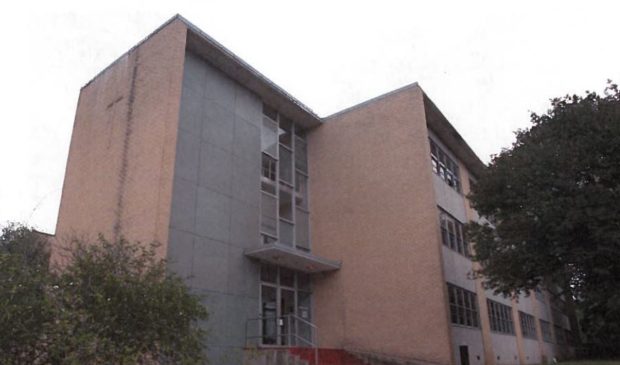Commissioners dive into St. Edward’s records
Friday, August 3, 2018 by
Jessi Devenyns There are many reasons that a building can be historic. One of them is if a structure is a part of a historic district where an architect has produced a significant body of work that embodies a period style and makes the building a landmark.
One building does not, however, make a historic district. Unless the historic district remains undiscovered, that is.
Adjacent to the historic portion of the St. Edward’s University campus is a dilapidated 1958 three-story dormitory called Andre Hall. It is currently being used as office space but is now at the end of its life span. The building came to the July 23 meeting of the Historic Landmark Commission for a recommendation for demolition.
“The building has really had a very good, useful life … (but) it is currently in pretty poor condition,” explained Larry Irsik of Architexas, who spoke on behalf of the university. The panels are peeling off the front of the building, and inside there are leaks and asbestos.
“It’s really getting to be a hazard,” he said.
St. Edward’s architect Kit Johnson agreed, saying, “This was looked at earlier, to see if we could save it, and it really doesn’t have the bones we need to meet our students’ needs.”
Irsik noted that before they demolished the structure, the dorm would be properly documented with photographs and the historical drawings would be preserved. There is also a figure of St. André of Montreal on the side of the building that will be preserved and stored on campus.
According to Johnson, although “architecture is lifted pretty high on the campus, and we take it pretty seriously,” this midcentury dorm does not meet the required standards for preservation.
The building was designed by the Julian and White architecture firm out of San Antonio. Although it exhibits features of the midcentury modern style that make it an interesting piece of architecture, on the campus, it is an anomaly. “We did not find a single other building they had actually done,” said Irsik.
While he was informing the commission about the lack of other structures designed by this firm, Commissioner Beth Valenzuela did a quick search in the Austin American-Statesman archives and discovered that the Julian and White architecture firm had also designed the kitchen and dining hall, as well as the science building.
“I have not seen that,” admitted Irsik. “We went through the entire archive at the university … so I’m not sure if they ever got built.”
With this new information come to light, the tone that the commissioners used when discussing the demolition permit began to change. Valenzuela requested more information about the architects who designed the building, since in her quick searching she also found mentions of their work in the national historic register. Their significance as designers could constitute a need to save the dormitory.
Commissioner Emily Reed went further, saying, “It’s a future possibility that the (historic) district could be expanded.”
To allow staff to gather more information about the Julian and White architecture firm and their significance to the St. Edward’s University campus, the commission voted to postpone the hearing until its Aug. 27 meeting. Commissioner Alex Papavasiliou opposed the motion.
The Austin Monitor’s work is made possible by donations from the community. Though our reporting covers donors from time to time, we are careful to keep business and editorial efforts separate while maintaining transparency. A complete list of donors is available here, and our code of ethics is explained here.
You're a community leader
And we’re honored you look to us for serious, in-depth news. You know a strong community needs local and dedicated watchdog reporting. We’re here for you and that won’t change. Now will you take the powerful next step and support our nonprofit news organization?









